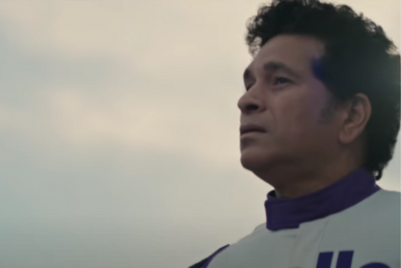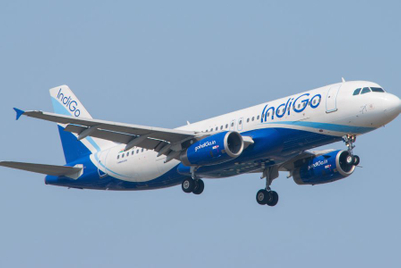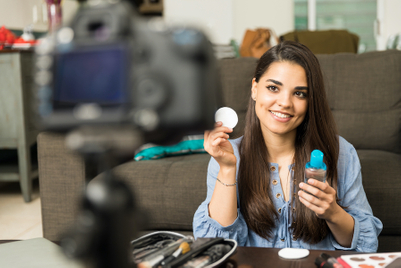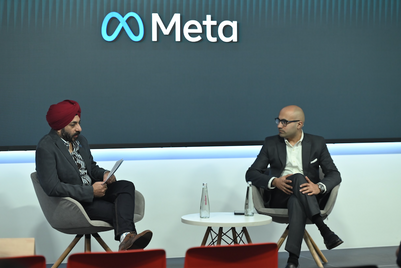With the pandemic shredding every hope of physical proximity and socialising to bits, most people have not been able to travel for close to two years.
But now experts suggest, a dip in the number of active Covid-19 cases and the festive season has led them to indulge in ‘revenge travel’ and fly borders to be reunited with their loved ones and take their much-needed vacations.
The joint sentiments of travellers have caused a preposterous increase in air traffic at airports. This has given brands the set-off to enhance their presence, leading to added investments in airport advertising.
However, with the return of travel, we are seeing increased wait times, perpetuated lines at airport counters, delayed flights and overall chaos, that may end up upsetting the traveller, who might not be in the best mind space to view the many innovations and ads displayed by brands.
Will this phenomenon guarantee a positive brand recall or sales conversion for a brand?
The current scenario at airports
Giving some context to the current situation, Aman Nanda, chief strategy officer, Times OOH, explained, “Domestic passengers are now arriving almost 120 minutes before flight departure times, whereas for international, the dwell time is over 240 minutes. For some destinations like the UAE, passengers have to come to the airport almost 360 minutes before flight departures, due to new mandates of the Rapid RT-PCR at the airport.”
Experts agree that the increased dwell time has had brands undeniably vying for airport advertising, with a hope of being seen by the myriads of waiting passengers.
Ambi Parameswaran, founder - Brand-Building.com, believed that excessive wait time is both a blessing, as well as a curse for brands that advertise in airports and for airport shops. “The wait time may help sell more goods, but might also cause empty browsing by passengers who have to kill time,” he added.
Boarding of airport advertising
Nanda pointed out that brands have moved towards airport advertising quite positively in the new normal. He shared how the domestic passenger footfall at the Mumbai, Kolkata, Indore, Trichy, and Coimbatore airports have grown by 200% in October, as against June 2021.
Listing a reason crucial enough for brands to consider advertising in the skies, Srivastava said, “Post pandemic, air transport is being seen as the cleanest and quickest way to commute, given the aesthetically safe environment and contactless process that airports are now offering.”
Times OOH also revealed that it has a healthy pipeline of interest from brands, especially post the festive season.
Speaking of how high Volkswagen Passenger Cars, India, flies in terms of advertising at airports, its head of marketing, Abbey Thomas claimed that the brand has actively increased its presence, especially at the Mumbai and New Delhi airports, as it witnesses a higher influx of passenger travel. However, the brand is currently focusing on outdoor sites outside the airport.
While most professionals credited the hike to the festive season, Atul Shrivastava, CEO, Laqshya Media, argued that the boom indicator started even before the festive period. “Diwali brought in an increased consumption at the airport and many retail outlets were offering good discounts as part of the 'Diwali Shopping Festival' that most airports were seen running. In terms of numbers, we are already at 80-90% of pre-covid levels,” he said.
Importance in a marketer’s media-mix
OOH is a critical component of Apollo Tyres’ 360-degree communications. The brand has targeted marquee sites as touchpoints, to connect with its target audience.
Satish Sharma, president, Asia Pacific, Middle East and Africa, shared that his brand has created iconic sites which attract maximum attention from the domestic as well as international flyers.
Volkswagen too, continues to treat airport advertising as a focus area in its marketing strategy. Explaining this strategy, Thomas said, “It has the potential to engage with passengers, as well as increase brand recall by placing advertisements in more visible locations like lounge areas, post-security clearance, near the food courts or the boarding gates.”
However, Parameswaran pointed out that one of the fallouts of this phenomenon could be the overcrowding of airport lounges for business class travellers. He said, “Some passengers may want to delay their travel plans if they can be postponed. Another knock-on effect would be the stress on leisure international travel.”
Srivastava is certain that airport advertising should be an integral part of any media mix. "Post pandemic, it has become all the more important because air transport is being seen as the cleanest and quickest way to commute, given the aesthetically safe environment and contactless process that airports are now offering," he added.
Nanda too, stated that it is an unparalleled media option, which offers the kind of visibility and interactivity that no other format can.
Atin Gupta, managing director, Atin OOH, added, “Airline advertising is unique, captive, measurable and lets you talk to a high net worth audience. It will always be an important mix, especially for certain brand categories like auto, real estate, consumer durables, tourism etc. Several brands just look at aviation advertising in the OOH space.”
Innovating beyond plain-vanilla ads
According to Sharma, simple display advertising at airports just doesn't work as it causes clutter, and hence Apollo looks at innovations to breakthrough.
He said, "We prefer innovative installations wherein we can highlight our product. Having said that, we would still be open to ideas for innovative advertising solutions inside the airport.”
He added that for a low involvement category like Apollo Tyres, innovative installations which let the product be displayed to full glory works best. “This is why you will see large tyre installations at the Delhi, Mumbai and Chennai airports. This is our long-term approach that hasn’t changed.”
Srivastava explained that while billboards continue to provide brand credibility, kiosks are ROI-driven. However, he admits that airports are a great venue for innovations.
He cited examples from brands like Himalaya Wellness and Flipkart, wherein the former is running an initiative of managing all the 'Baby Feeding rooms' at the airport, for travelling moms with babies. At the same time, the latter took to the programmatic dOOH route to nudge the airport’s waiting passengers to participate in its ‘Big Billion Sale’.
However, Gupta believes that most brands are looking at the traditional options, which they consider the safest. He said, “We have seen queries from brands, especially for digital media on airlines, and for celebrating festivals. We feel it will fructify, beginning January 2022.”
Brand-recall for passengers waiting
When asked about how disarrayed airport schedules would have passengers remember the ads they’ve viewed, experts suggest that it would be a mix of 50:50 negatives and positives for brands.
Speaking of the positives, Gupta said, “Brands get to communicate with their target clientele in a relaxed captive environment.”
However, he also stated that some brands would rush due to the sudden influx of passengers, whereas others would stay away out of mistrust towards the ability of passengers to notice and absorb their message.
Depending on the nature of the advertisement, it gets captured in the episodic or semantic memory of the passenger, thereby impacting the brand or product recall, according to Thomas.
Parameswaran ruled that there is very little that brands can do in this situation, except ensure that their displays don’t trigger a negative reaction.




.jpg&h=334&w=500&q=100&v=20250320&c=1)
.jpg&h=334&w=500&q=100&v=20250320&c=1)
.jpg&h=334&w=500&q=100&v=20250320&c=1)


.jpg&h=334&w=500&q=100&v=20250320&c=1)






_20220915032801.png&h=268&w=401&q=100&v=20250320&c=1)

.jpg&h=268&w=401&q=100&v=20250320&c=1)
.jpg&h=268&w=401&q=100&v=20250320&c=1)


